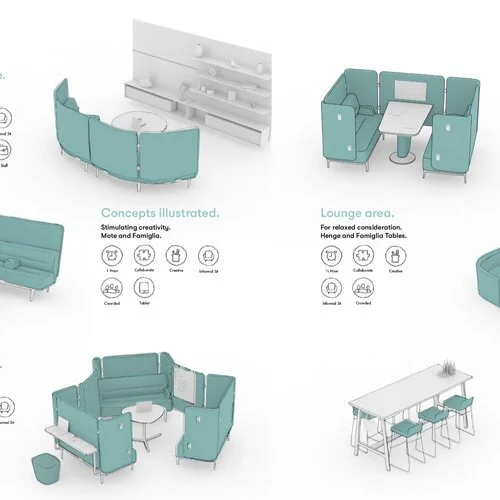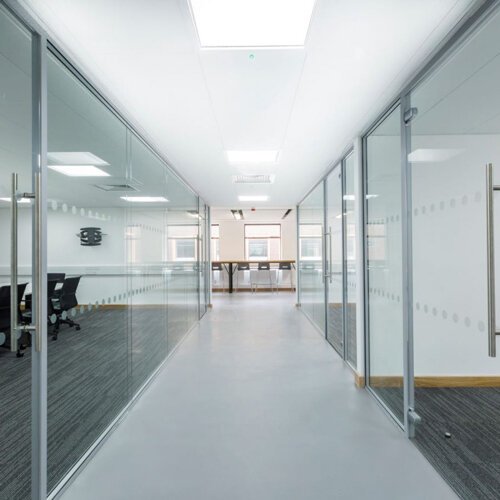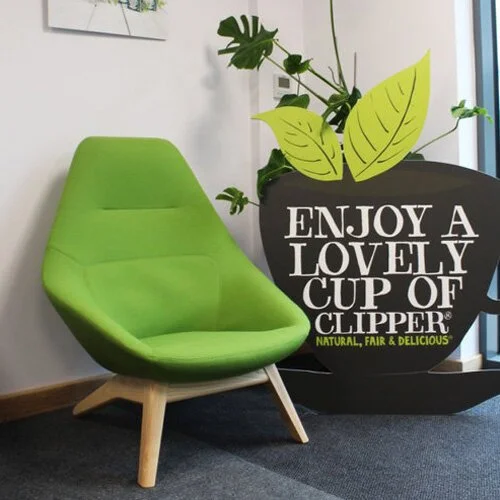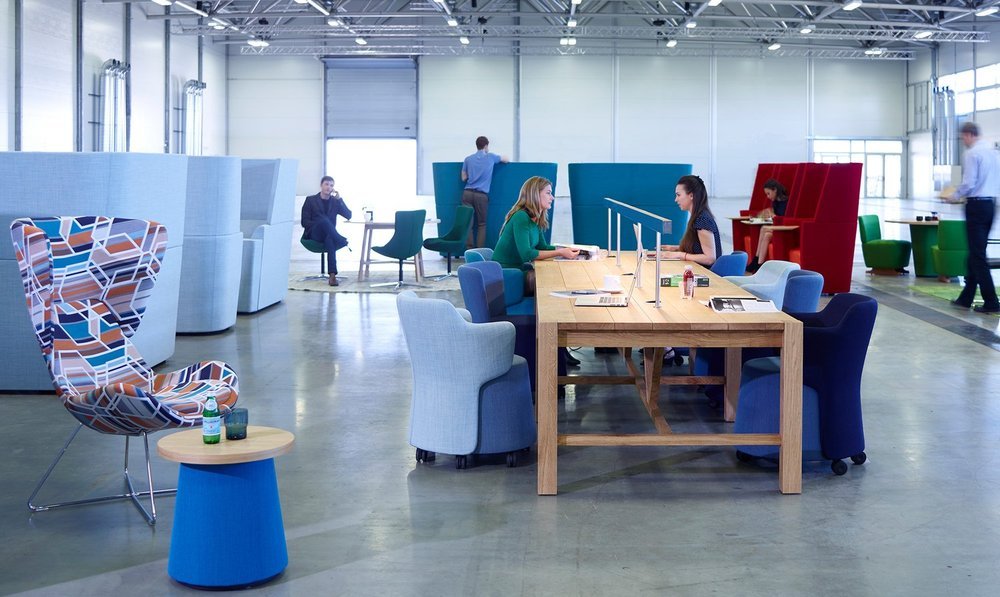The pros and cons of office relocation
Running out of office space? Should you stay or should you go?
If your business has outgrown its existing office space, then the first thing to say is congratulations! You’re clearly doing alright! But whilst your order book and bottom line are looking rosy, your office environment is probably wilting under the strain. You need to consider your next move very quickly and carefully, before the squeeze puts pressure on your staff and their productivity.
When business owners find they have more bums than seats and more equipment than storage space, then they usually consider two options – move the office to bigger premises or open an additional office. But there is a third option, one that can save a great deal of time, money and disruption, and if done correctly, can support your business as it grows for several more years. And that third solution is rationalising your existing office space.
Over the years we’ve worked with many business owners that had previously dismissed staying put and rationalising their existing space – until they looked seriously into the costs and impact of moving. Relocating a business or an office can certainly breathe new life and invigorate a workforce (but so too can a good refurbishment project!), however, the process is fraught with pitfalls. In fact, it’s fraught full stop.
The downsides to office relocation
We don’t like to focus on negatives, but suffice to say there are just a few downsides to relocating. Firstly you have to find suitable new premises, which is far easier said than done. Your new location needs to offer the same, if not more parking, and the same if not better access for employees, customers and suppliers. And let’s be honest, if your business is moving up in the world, then your new office interior and environment needs to reflect that. You don’t want staff or customers to feel that the new environment is actually a step down from your current premises. And of course, stepping up, comes with a bigger price tag.
There are also a few extra costs to consider. Of course there are agent’s and solicitor’s fees, and the costs associated with obtaining a schedule of conditions, a survey, as well as dilapidations to your current premises, but there are also a few hidden extra costs. There’s the costs associated with the disruption to your business when you move, the potential loss of some customers and employees, and the costs of recruitment and training to replace workers who wouldn’t/couldn’t relocate with the business – to name but a few.
Rationalising rationalisation
Enough negativity. Now let’s focus on some really good news. And that’s the fact that we’ve helped businesses that are seemingly bursting at the seams, to find ways to stay put, save a great deal of money and keep their precious employees and customers happy.
Rationalising office space is a serious option, but if it’s going to work and work for the medium to long term, then it’s got to be done properly. We’re not talking squeezing in a few more desks, sprucing up the office interior and putting up a few extra partitions. We’re not even talking taking down walls to create more space. We’re talking really getting to grips with your current and prospective business model to understand who you employ and how they work now, as well as how that could be altered/improved, and what your future headcount could look like. We’ll write more about that process in a future blog, but right now, let’s look at the exciting opportunities that could present themselves if you rationalise your business space.
Hands up who wants to work from home?
First things first – let’s deal with the sticky issue of remote working. Understandably bosses have previously had big reservations about letting employees work from home. They picture employees in their pyjamas, eating Doritos whilst watching daytime TV and occasionally refreshing their emails. If that’s one of your niggling concerns, then let us put your mind at rest. According to research by Jabra the home office is considered to be the most productive workspace and that opinion is increasing year on year. Jabra’s global survey of business professionals in the US, UK, Germany and France found that nearly one in three UK employees considers working from home to be the most productive.
It’s understandable that employers might be nervous about surrendering oversight of their workers, but advances in technology can appease any niggles. Today’s technologies mean that it’s easy to check in and communicate with employees who aren’t in the office. It’s also incredibly easy for workers to collaborate with each other, no matter where they are.
The cloud, broadband speeds, documents sharing facilities, collaboration tools, web conferencing and instant messaging all enable people and teams to work remotely, and more productively than ever before. The Chartered Institute of Personnel and Development, the UK’s HR body, has found that most home workers are keen on such arrangements, with 65% of flexible workers feeling happy with their conditions, compared to 47% who work full-time in an office.
So, now that we’ve addressed the arguments against letting some of your employees work remotely, either full time or flexibly, let’s talk about hot desks. After all, we’ve just freed up a lot of potential space, haven’t we? If employees are more productive and actually want the option to work from home, then it’s important that your new office layout provides adequate hot desking facilities. The options are endless and range from individual desks (which could be height adjustable) to more collaborative bench style seating. What you choose depends completely on the type of work being conducted, how your employees like to work, what space you’ve got and your company culture.
If employees are going to be encouraged to work remotely, then it’s important to consider the kind of space and environment you’re going create for them when they come into the office. There’s no denying that feeling part of a team and part of a company culture is important to employees. Connectivity cannot be underestimated so we would always advise putting a great deal of emphasis on collaborative workspaces where disparate workers and teams can come together. Again, there are plenty of options to consider.
At the same time, if your rationalisation and refurbishment project does involve opening up spaces for hot desks and collaboration, then don’t forget to offer areas that provide privacy for quiet working and private conversations and phone calls. Pods and cells are perfect for small meetings and there’s an array of acoustic shields that can dim noise levels in busy, open plan offices.
Another massive plus point in favour of rationalising space, is that if planned carefully and correctly, it can be conducted and completed with very little disruption to the business. Areas and sections can be worked on incrementally, ensuring business continuity for staff and customers. And whilst we’re on the subject of keeping staff and customers happy, then this is the perfect opportunity to reinforce your brand and inject some energy into your business. There’s so much that can be achieved with colour and furnishings, and because you’ll be saving yourself a bundle of money in relocation costs, why not splash out on a few new plants for the office too?
If it’s time for you to breathe new life into your business, then we seriously recommend exploring the options of rationalising your space, and we’d welcome the opportunity to talk to you about it. Get in touch today to find out how we can help you.
If you want to speak to an office interiors expert, please get in touch.












